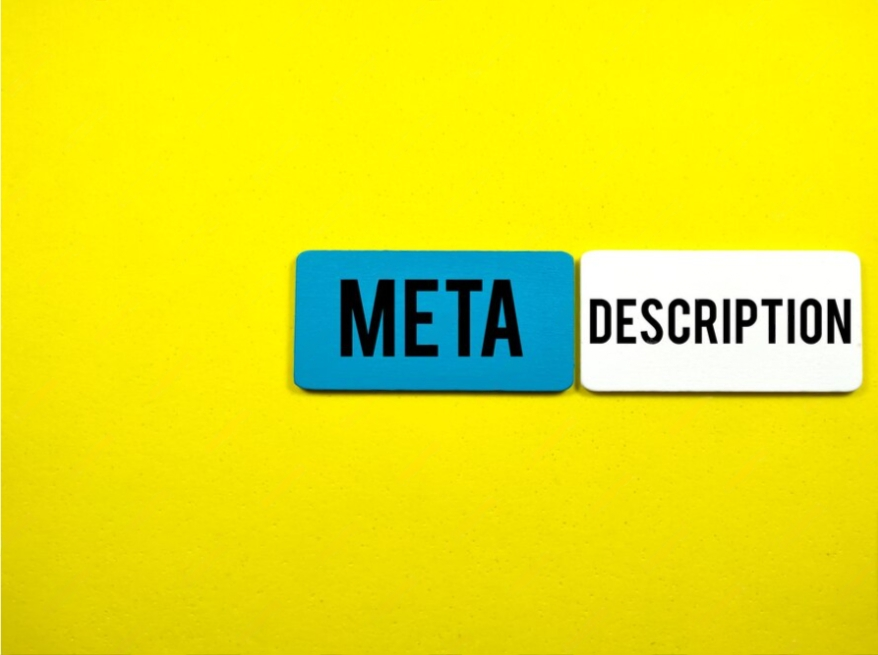How to create the Perfect Meta Description: Know How
Meta descriptions are a fundamental component of search engine optimization (SEO) and digital marketing strategies. These often-overlooked snippets play a pivotal role in influencing user engagement and click-through rates (CTR). In this comprehensive guide, we will delve deep into the art of crafting the perfect meta description, demystifying its significance, and helping you become a master of this vital SEO element.
Before we delve into the intricacies of creating impeccable meta descriptions, let’s start by unraveling the core essence of these miniature content gems.
What is Meta Description?
A meta description is a brief snippet of text, usually around 150-160 characters, that summarizes the content of a web page. It appears in search engine results below the page title and URL, providing users with a concise preview of what they can expect from the page. While not a direct ranking factor, a well-crafted meta description can influence click-through rates by compelling users to click on the link. It serves as an opportunity to entice and inform searchers about the content’s relevance, encouraging them to visit the page by offering a glimpse into the value or information available on that specific webpage.
Why is Meta Description Important?
To appreciate the value of meta descriptions, we need to understand their multifaceted importance in the realm of digital marketing and SEO.
1. User Engagement: Meta descriptions serve as the initial point of contact with users. When well-crafted, they can pique user interest, prompting them to click through to your website for a more in-depth experience.
2. SEO Impact: While meta descriptions themselves aren’t a direct SEO ranking factor, they wield indirect influence over search engine rankings. How? By driving higher CTRs, is a metric that search engines like Google consider when assessing the relevance and popularity of web pages.
3. Improved Clarity: In the realm of user experience, clarity and relevance are paramount. A concise and informative meta description ensures that users clearly understand the content’s nature and its relevance to their query.
4. Higher CTR, More Traffic: An effective meta description can be the secret sauce for securing higher CTRs (Click through rate). A greater CTR translates into more organic traffic for your website, which is a win-win for any digital marketer or SEO enthusiast.
Anatomy of a Meta Description: What Goes into One?
Meta descriptions are more than just brief textual summaries; they comprise several crucial elements that are integral to their effectiveness. To craft the perfect meta description, it’s vital to understand and utilize these elements to your advantage.
1. Character Count: How Much Space Do You Have?
The character count of your meta description is a critical aspect to consider. Search engines, Google in particular, display roughly 150-160 characters. Crafting compelling, informative content within this character limit is both an art and a science.
2. Relevance: Match User Intent
At the core of a stellar meta description lies the principle of relevance. Your meta description should authentically mirror the content within your webpage. It’s not a place for clickbait or misleading information; rather, it should align with the user’s intent and expectations.
3. Keywords: Incorporate Target Keywords
Incorporating target keywords is a foundational SEO practice that applies to meta descriptions as well. Utilize your keyword research to identify primary and secondary keywords that are most relevant to your content and the user’s query.
4. Action-Oriented Language: Encourage Clicks
An effective meta description should employ action-oriented language that prompts users to engage with your content. Action verbs and phrases like “Learn More,” “Discover,” or “Find Out” can be particularly compelling.
5. Unique Selling Proposition (USP): Highlight Benefits
What sets your content apart from the competition? Every piece of content has a unique selling proposition (USP), and your meta description is the place to convey it. Let users know what they stand to gain by clicking on your link.
6. Call-to-Action (CTA): Direct Engagement
Incorporating a subtle call-to-action (CTA) into your meta description can have a profound impact on CTRs. Phrases like “Read Now,” “Explore,” or “Get Started” gently guide users towards taking the desired action, whether it’s reading an article, exploring a product, or learning more about a service.
How to Crafting a Perfect Meta Description?
Creating an effective meta description is both a science and an art. It’s about understanding user intent, identifying relevant keywords, staying concise yet engaging, and ultimately connecting with your audience in a few succinct lines.
Step 1: Understand User Intent
Crafting an effective meta description begins with understanding the user’s intent. What are users looking for, and how does your content address that need? The key here is to ensure that your meta description is a natural continuation of your user’s query.
Step 2: Identify Target Keywords
Before you embark on writing your meta description, conduct in-depth keyword research. It’s essential to pinpoint primary and secondary keywords that are not only highly relevant to your content but also align with the user’s search intent. Try to find Low competition keywords
Step 3: Keep It Concise and Informative
Remember the character count limit of around 150-160 characters in meta descriptions. Within this limited space, you need to provide a concise yet informative snapshot of your content. Think of it as a teaser that captures the essence of what your webpage has to offer.
Step 4: Add a CTA
A well-placed call-to-action (CTA) can significantly boost CTR. A CTA encourages users to take a specific action. Depending on the nature of your content, your CTA might invite users to “Read More,” “Learn,” “Get Started,” or “Discover.”
Step 5: Highlight the USP
What makes your content unique or better than the competition? Use your meta description to emphasize the specific benefits users will gain from clicking your link. Whether it’s valuable insights, a unique perspective, or a practical solution, the USP is your hook.
Step 6: Testing and Refining Your Meta Descriptions
Meta descriptions aren’t set in stone. To optimize their effectiveness, it’s essential to adopt a process of continuous testing and refinement. Tools like Google Optimize can help in this process.
Common Mistakes to Avoid:
One common pitfall in crafting meta descriptions is keyword stuffing or repetition. While incorporating relevant keywords is essential, overloading the description with keywords can make it seem unnatural and spammy. This could negatively impact both user experience and search rankings. Similarly, using the same phrases excessively may dilute the message and fail to entice users effectively. Strive for a balanced approach, focusing on clarity and relevance rather than cramming in keywords.
Keyword Stuffing and Repetition:
Keyword stuffing involves excessively inserting keywords into a meta description with the aim of manipulating search rankings. Overuse of keywords often leads to an awkward, unnatural description that doesn’t resonate with users. Repetitive use of phrases or terms, hoping to reinforce relevance, can backfire by diluting the message and causing user disinterest. Instead, focus on creating concise, meaningful descriptions that incorporate relevant keywords organically.
Irrelevant or Misleading Descriptions:
Another critical mistake is presenting irrelevant or misleading information in meta descriptions. Inaccurate or deceptive descriptions not only lead to frustrated users but also result in higher bounce rates. When the content doesn’t align with what’s promised in the description, it damages the credibility of the website. It’s crucial to ensure that meta descriptions accurately reflect the content on the page to build trust and encourage user engagement.
Wrapping Up
Creating the right meta description is a critical element of your SEO strategy. It’s your opportunity to entice users, enhance CTR, and drive organic traffic. When done right, it not only elevates your search engine rankings but also improves the user experience. So, whether you’re an SEO expert or a novice, make crafting the perfect meta description a priority. It’s your gateway to increased traffic and online success.
FAQs
1. What is a meta description?
– Answer: A meta description is a brief snippet of text displayed under a website link in search results. It summarizes a page’s content, helping users understand what they’ll find when they click.
2. How long should a meta description be?
– Answer: Aim for around 150-160 characters to ensure the description appears fully in search results. Google typically truncates longer descriptions.
3. Are meta descriptions important for SEO?
– Answer: Yes, they are. While they don’t directly impact rankings, well-crafted meta descriptions can boost click-through rates, indirectly influencing SEO performance.
4. Should I use keywords in my meta description?
– Answer: Yes, including relevant keywords in your meta description helps signal to users and search engines that your content aligns with their queries.
5. Can I use the same meta description for all pages on my website?
– Answer: It’s best to create unique, tailored descriptions for each page. Customized descriptions that accurately reflect the content drive higher engagement.







